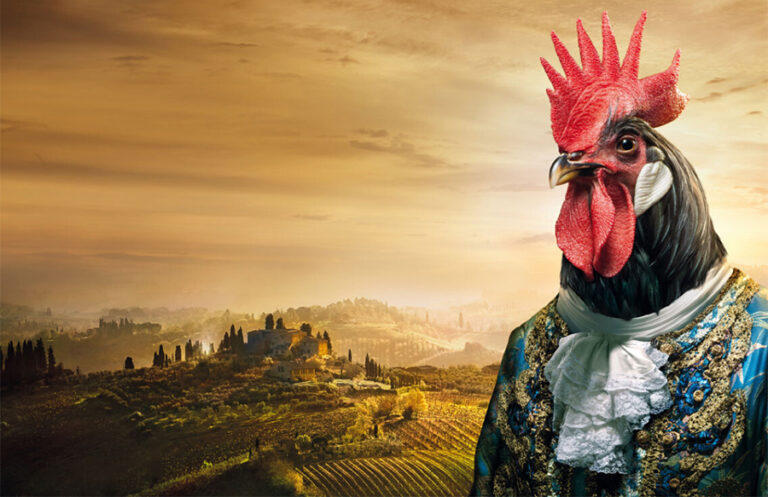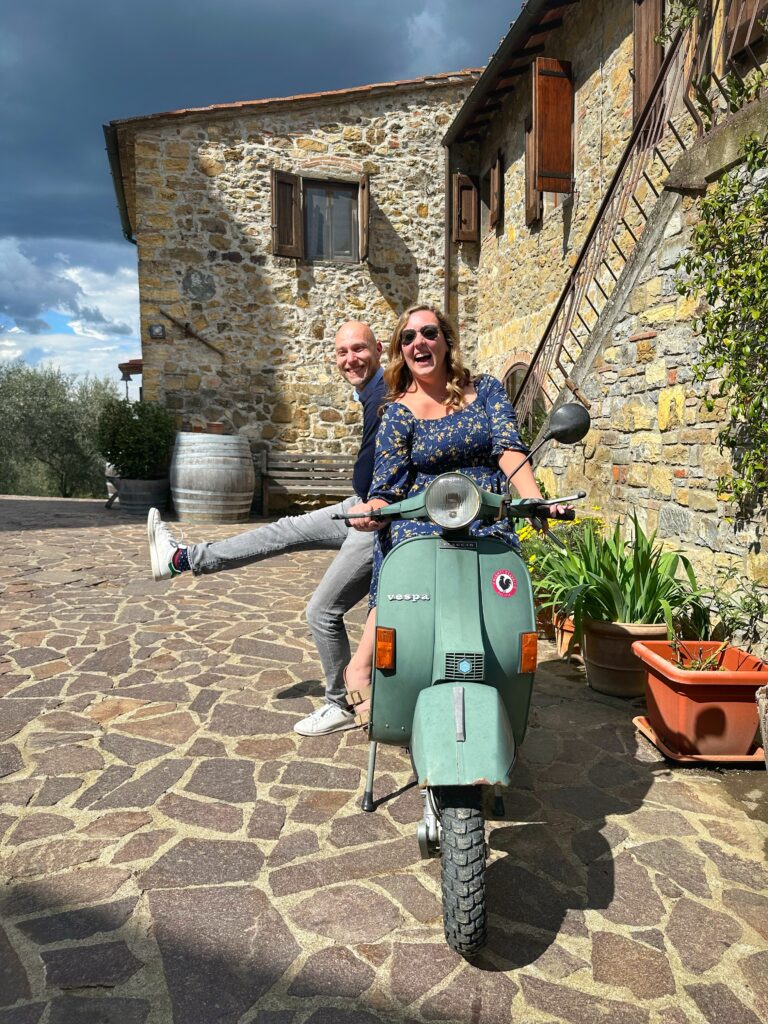Exploring the history, evolution, and enduring legacy of Super Tuscan wines within Tuscany’s renowned vineyards.
With Tuscany Uncorked Wine Tours, you can discover how Tuscany is combining tradition and innovation, producing some of the most historical and innovative wines.
Introduction to Tuscany Wine and the Super Tuscan Phenomenon
Tuscany’s reputation as one of the world’s premier regions for viticulture rests on its historic landscapes, ideal climate, and centuries‐old winemaking traditions. The rolling hills, sun‐baked vineyards, and medieval villages give Tuscany a magical allure that draws wine enthusiasts from around the globe. But what sets Tuscany apart is its bold embrace of innovation—most notably embodied by the Super Tuscan movement. In this article, we’ll delve into how Super Tuscans shook up traditional regulations to create some of the best red wines in Tuscany, explore the region’s varied wine regions in Tuscany, and guide you toward immersive wine tasting tours in Tuscany that celebrate these exceptional bottles.
Tuscany is famous for its red wines, above all for the Sangiovese‐based classics of Chianti Classico, Brunello di Montalcino, and Vino Nobile di Montepulciano. However, the region also produces elegant white wines, such as Vernaccia di San Gimignano, and aromatic rosés that showcase the versatility of local grapes.
That is why wine lovers often wonder: Is Tuscany famous for red or white wine?
While there are noteworthy whites, the region’s fame predominantly comes from robust red varietals, with Super Tuscans holding a special place among aficionados. 85% of Tuscan vineyards are planted with red varieties.
Super Tuscans emerged in the early 1970s as winemakers challenged the rigid boundaries of the Denominazione di Origine Controllata (DOC) regulations. By incorporating international varieties like Cabernet Sauvignon and Merlot alongside—or in place of—traditional Sangiovese, these pioneering producers created wines that would redefine “Tuscany wines” on the global stage.
Before we trace their story, let’s briefly address some common questions: Are Tuscany and Chianti the same?
Chianti is one of Tuscany’s most celebrated subregions, but it represents just one slice of the region’s broader viticultural map. Tuscany encompasses diverse wine regions, from coastal Bolgheri to inland hills near Siena. Chianti occupies central Tuscany and specializes in Sangiovese blends, while Super Tuscans often hail from Bolgheri (e.g., Sassicaia) or Montalcino (e.g., some single‐vineyard innovations).

The Birth of Super Tuscan: Breaking the Rules
In the late 1960s and early 1970s, several visionary Tuscan winemakers grew frustrated with DOC guidelines that they felt stifled quality. To achieve more concentrated, ageworthy wines, they began experimenting with non‐traditional varietals—primarily French grapes—and vinification techniques borrowed from Bordeaux. These experimental wines could not legally carry traditional appellations like Chianti Classico DOCG, so they were relegated to the generic “Vino da Tavola” (table wine) category, despite often surpassing DOC standards in quality.
One of the earliest and most influential Super Tuscans was Tenuta San Guido’s Sassicaia. Beginning as a private, estate‐exclusive wine in 1968 under the guidance of Marchese Mario Incisa della Rocchetta and oenologist Giacomo Tachis, Sassicaia blended 85% Cabernet Sauvignon with 15% Cabernet Franc. Its first commercial release in 1971 stunned critics and collectors with its elegance and structure. Tachis later went on to craft Tignanello for Marchesi Antinori, blending Sangiovese with Cabernet Sauvignon in 1975—another watershed moment.
These boundary‐pushing wines were dubbed “Super Tuscan” by English wine experts or critics rather than any official Italian body—an informal moniker that nonetheless captured international attention. Their success forced Italian authorities to reconsider DOC regulations. In 1992, the Indicazione Geografica Tipica (IGT) designation was introduced, allowing these innovative blends to gain recognition while maintaining geographic authenticity.
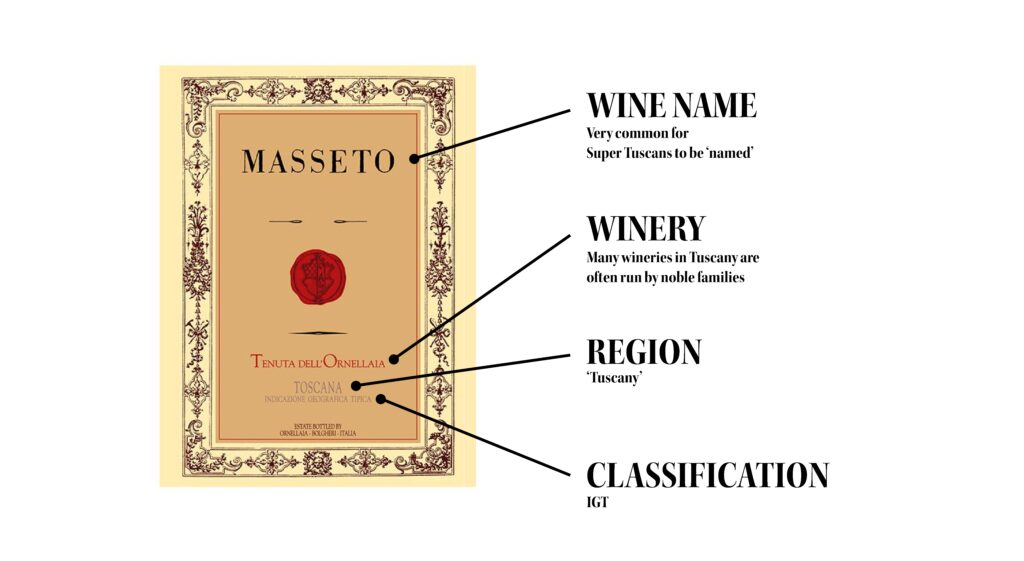
Grape Varieties and Style: What Makes a Wine Super Tuscan
Super Tuscans typically feature a combination of local and international grape varieties, producing ageworthy reds with bold fruit, robust tannins, and notes of cedar, leather, and spice. The most common grapes include:
- Sangiovese: Tuscany’s flagship variety, providing bright acidity, red‐fruit flavors, and the backbone for many blends.
- Cabernet Sauvignon: Brought in from Bordeaux, it adds structure, blackcurrant notes, and aging potential.
- Cabernet Franc: Offers herbal and floral nuances, smoothing out the blend.
- Merlot: Contributes plush, supple fruitiness and softer tannins.
- Syrah: Occasionally used in smaller quantities to impart peppery, savory complexity.
Unlike many DOC regulations that dictate minimum percentages of certain grapes, Super Tuscans were initially unconstrained by such limits, allowing winemakers to experiment. Stylistically, these wines aim for international appeal: dense color, ripe dark fruit, and the capacity to age gracefully for decades. Through the 1980s and ’90s, the viscerally modern style of Super Tuscans became a benchmark for quality in Italy.
Iconic Wineries in Tuscany Producing Super Tuscans
When seeking out the best wineries in Tuscany that produce Super Tuscans, several estates consistently top critics’ lists:
- Tenuta San Guido (Bolgheri): Creator of Sassicaia, often hailed as the first and finest Super Tuscan. Its maritime climate near the Tyrrhenian Sea yields wines with precision and minerality.
- Marchesi Antinori (Chianti Classico): With a history dating back to 1385, Antinori is one of Italy’s oldest winemaking families. Tignanello pioneered the Sangiovese‐Cabernet blend, while Solaia is a Cabernet‐dominated single‐vineyard icon.
- Tenuta dell’Ornellaia (Bolgheri): Founded in 1981 by Marchese Lodovico Antinori, Ornellaia quickly rose to prominence for its opulent Bordeaux‐style reds and acclaimed second wines such as Le Serre Nuove.
- Castello di Ama (Chianti Classico): Though technically in Chianti, Ama’s single‐vineyard experiments, including the most famous Apparita label, have gained cult status.
- Tenuta di Trinoro (Val d’Orcia): Located near Montalcino, Tenuta di Trinoro focuses on Cabernet Franc and Merlot, creating dense, ageworthy reds akin to Right Bank Bordeaux.

These estates demonstrate that some of the best wineries in Tuscany are those unafraid to innovate. By situating their vineyards in prime micro‐climates—often inspired by Bordeaux terroir—these producers redefined what Tuscany wines could be. Many of these vineyards are also open for wine tasting tours in Tuscany, providing visitors with memorable encounters and vertical tastings spanning decades.
Tuscany Vineyards and Wine Regions in Tuscany: The Terroir Behind Super Tuscans
Super Tuscans thrive in unique terroirs within Tuscany vineyards that balance Mediterranean breezes, hillside exposures, and diverse soils. Some of the key wine regions in Tuscany associated with Super Tuscan production include:
- Bolgheri: Located on the southwestern coast, Bolgheri’s gravelly soils and cooling sea breezes create ideal conditions for Cabernet Sauvignon and Cabernet Franc. Here, estates like Sassicaia and Ornellaia have elevated Bolgheri to international acclaim.
- Chianti Classico: Often thought of for Sangiovese‐dominated blends, Chianti Classico subzones, have seen Super Tuscan‐style experimentation. Fontodi and Castello dei Rampolla exemplify single‐vineyard innovations.
- Montalcino and Val d’Orcia: Though known primarily for Brunello di Montalcino (100% Sangiovese), some producers in the Val d’Orcia area—just south of Montalcino—have planted international grapes. Tenuta di Trinoro’s single vineyards Cabernet Francs reflect this evolution.
- Cortona: Situated in southeastern Tuscany, Cortona’s elevated vineyards produce Syrah that rivals Rhône Valley counterparts. Syrah is sometimes incorporated into Super Tuscan blends for its peppery notes. Try Stefano Amerighi wines to enjoy pure Syrah joy.
- Suvereto and Val di Cornia: Emerging on the map as dynamic coastal sites, these regions deliver aromatic whites and robust reds. Le Pupille’s Saffredi, for example, is a Super Tuscan‐style blend featuring Merlot, Sangiovese, and Petit Verdot. Another intuition of Giacomo Tachis.
When exploring Tuscany vineyards, you’ll notice how altitude, proximity to the sea, and soil composition—ranging from clayey galestro to pebbly alberese—contribute to distinct flavor profiles. Wine regions in Tuscany are not monolithic; they vary from the cooler, maritime‐influenced coastal sites to warmer inland hills. This diversity enables producers to craft a wide spectrum of styles under the broad “Super Tuscan” umbrella.
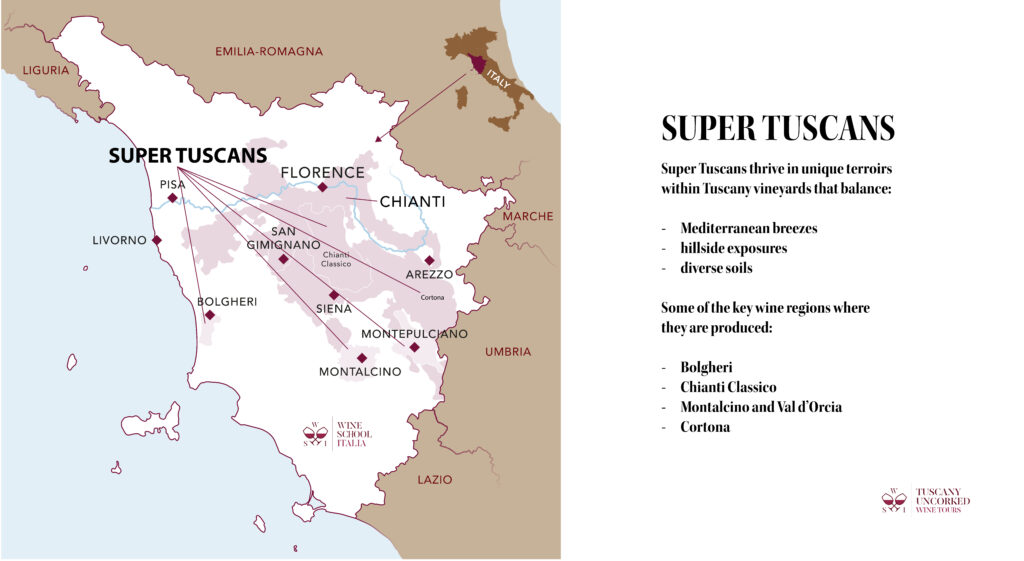
Wine Tasting Tours Tuscany: Experiencing Super Tuscans in Their Homeland
Embarking on Tuscany Uncorked wine tours offers an immersive way to appreciate the Super Tuscan phenomenon. In Chianti Classico, Montalcino, Cortona, and Bolgheri, our certified sommeliers guide you through cantine that craft iconic blends, pairing in-depth tastings with insider cellar visits:
Chianti Classico Discovery Tour: On this small-group excursion, Tuscany Uncorked leads you to premier cantine in Chianti Classico producing Super Tuscans in grande stile. Visit three family-run estates—each renowned for Sangiovese-Cabernet blends—explore historic cellars, and savor a three-course Tuscan lunch, all while learning how “Tuscany wine” became synonymous with innovation.
Brunello Grand Tour Experience: In Montalcino, our guided Wine Tasting Tour in Tuscany takes you to three top cantine that excel in both Brunello and cutting-edge Super Tuscans. Sip ageworthy Sangiovese alongside Bordeaux varieties, wander through sun-drenched vineyards in Val d’Orcia, and enjoy locally sourced dishes—an ideal way to see how Super Tuscans evolved alongside Brunello’s legacy.
Private Tours in Bolgheri: For travelers seeking a tailor-made itinerary, our exclusive private tours transport you by luxury Mercedes van from Florence (or your chosen start) through Bolgheri vineyards. Visit iconic estates and other less-known wineries producing premium Super Tuscans. Each experience is crafted by a WSET-certified educator to reveal how these wine regions in Tuscany rival Bordeaux itself.
Private Tours in Cortona: Discover Cortona’s hilltop terroir on a bespoke private tour focused on Syrah-driven Super Tuscans. Meet boutique producers crafting limited-production bottlings, wander vine-lined hills, and gain behind-the-scenes access to cellars. Our personalized itineraries ensure you taste rare gems while learning why Cortona’s elevation and climate yield some of the most distinctive Super Tuscan expressions.
Tailored Experiences and Hidden Gems: Beyond Chianti Classico and Montalcino, Tuscany Uncorked designs bespoke visits to emerging Super Tuscan hotspots like Suvereto and Val di Cornia. These private tours unveil boutique cantine crafting unique Bordeaux-style blends off the beaten path. With intimate cellar tours, vertical tastings, and direct encounters with winemakers, you’ll see firsthand why best wineries in Tuscany often include these under-the-radar producers.
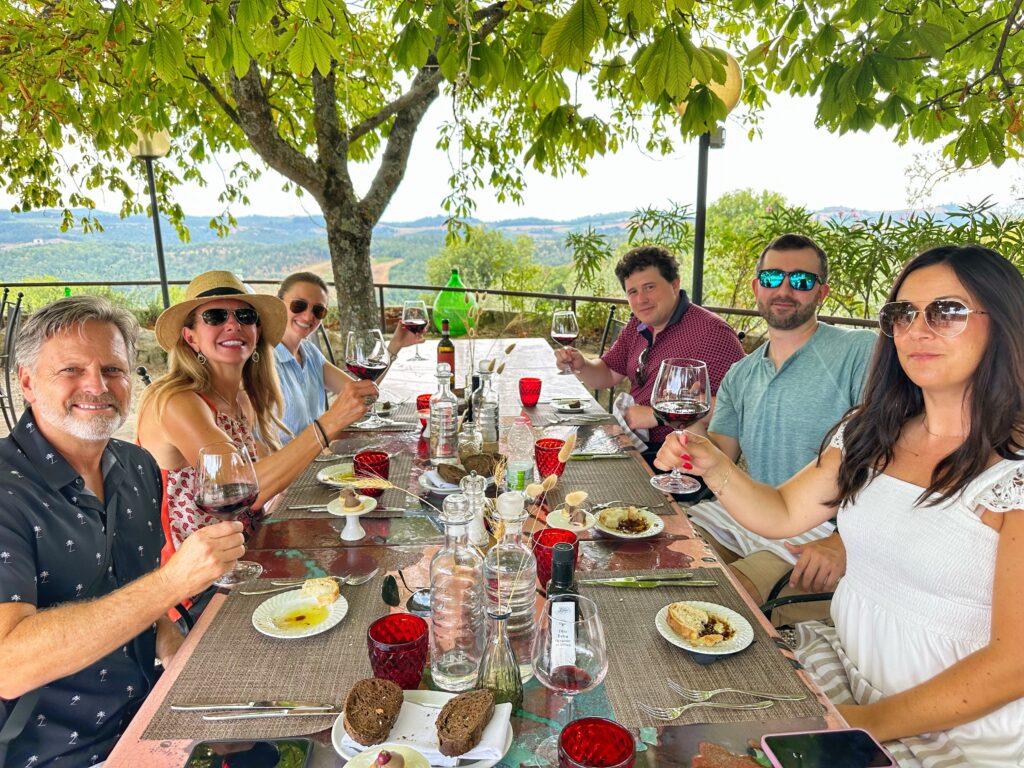
When planning wine tasting tours in Tuscany, consider the following tips:
- Book in Advance: Popular estates require reservations, especially in peak season (May–September).
- Combine Regions: A comprehensive multi-days itinerary might start in Chianti Classico for traditional Sangiovese, then proceed to Bolgheri for Super Tuscans, and finish near Montalcino or Cortona for broader perspective.
- Tour with Real Professionals: We are specialized in curated experiences, weaving in visits to smaller, family‐run estates that produce limited‐edition Super Tuscans off the beaten path. Our tour guides are Certified WSET Wine Educators.
- Timing Matters: Late spring or early fall (September–October during harvest) offers mild weather, fewer crowds, and the spectacle of harvest activity.
Super Tuscans in the Context of Tuscany’s Wine Tradition
What are the differences between Super Tuscans and the other types of wines in Tuscany?
Tuscany’s portfolio spans red, white, rosé, and dessert wines. Key styles include:
- Chianti Classico DOCG (Sangiovese blends)
- Brunello di Montalcino DOCG (100% Sangiovese)
- Vino Nobile di Montepulciano DOCG (predominantly Sangiovese)
- Morellino di Scansano DOCG (Sangiovese from Maremma)
- Vernaccia di San Gimignano DOCG (white wine)
- Vin Santo (sweet, aged dessert wine)
- Supertuscans (blends under IGT Toscana, often featuring Cabernet Sauvignon and Merlot)
- Cortona DOC (Syrah and international varieties blends)
By forging alliances between French varieties and indigenous grapes, Super Tuscans expanded the concept of different types of wines in Tuscany, demonstrating that the region could rival Bordeaux in depth, aging potential, and international prestige.
What is the most popular wine in Tuscany?
While Chianti Classico, Brunello di Montalcino, and Vino Nobile di Montepulciano remain immensely popular, Super Tuscans have cemented their status among collectors and critics worldwide. Sassicaia often ranks as the most sought‐after Tuscan red at auction, and Tignanello consistently commands top points from international critics. Yet for everyday enjoyment—especially among visitors on wine tasting tours—Chianti Classico frequently tops “most popular” lists due to its balanced price point and accessibility. Some other famous Super Tuscans are:
- Oreno (Tenuta Sette Ponti)
- Orma (Orma)
- Il Blu (Brancaia)
- Redigaffi (Tua Rita)
- D’Alceo (Castello dei Rampolla)
- Masseto (Masseto)
- Messorio (Le Macchiole)
Choosing the Best Red Wine in Tuscany: Is a Super Tuscan Right for You?
When surveying the category of best red wine in Tuscany, one must consider budget, stylistic preference, and aging potential. For collectors seeking prestige, Super Tuscans often top the list. Yet it’s helpful to compare them against more traditional appellations:
Is a Super Tuscan the best red wine in Tuscany for you? It depends on your palate:
- If you prefer robust, fruit‐driven wines with velvety tannins and the cachet of a cult following, Super Tuscans deliver.
- If you seek classically Italian flavors—cranberry, earth, and brisk acidity—opt for a top‐tier Brunello or Chianti Classico Riserva.
- If value and approachability matter, look to quality – but more affordable – IGT Tuscan reds or second‐tier Brunello producers.
Regardless of choice, planning visits to some of the best wineries in Tuscany will deepen your appreciation. Spending time in Toscana’s signature vineyards, walking rows of ancient Sangiovese vines, and savoring barrel samples at a wine tasting tour in Tuscany are experiences that no online review can replace.
The Impact of Super Tuscans on Global Wine Culture
Super Tuscans not only elevated Italy’s status in the premium wine market but also influenced regulations worldwide. By demonstrating that terroir and winemaker expertise can trump appellation rigidity, they inspired:
- The creation of the IGT (Indicazione Geografica Tipica) category, granting greater flexibility.
- Collectors to view Italy not merely as a traditionalist region but as a forward‐thinking powerhouse capable of world‐class, ageworthy reds.
Critics argue that the Super Tuscan movement risked overshadowing indigenous varieties; however, most producers continue to champion Sangiovese, ensuring that the region’s roots remain intact. Today, many Super Tuscan estates produce separate labels for traditional Sangiovese bottlings alongside their flagship blends, offering consumers a comprehensive view of Tuscany wine’s potential.
Planning Your Visit: Combining Tradition and Innovation in Tuscany
Throughout your journey, take advantage of wine tasting tours in Tuscany to optimize logistics: Tuscany Uncorked offers private or small-groups Wine Expert driver‐guide services that line up perfectly with estate opening hours, allow for vineyard walks, and include visits to local producers off the main tourist track. Departure is from Florence or, with a private tour, can be at your location.
These and many other fascinating stories are just waiting for you with Tuscany Uncorked.
Stay in Touch
📲 Follow us on Instagram and Facebook for more wine adventures, travel tips, and exclusive experiences!
See you in Tuscany! 🍷


